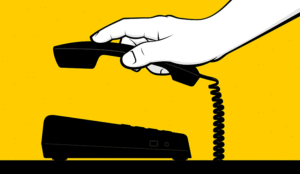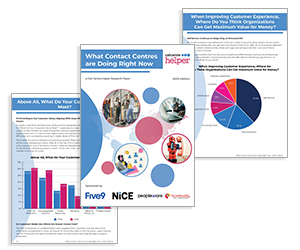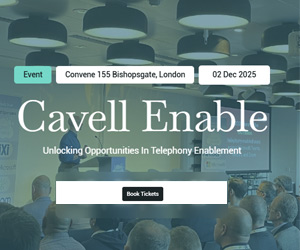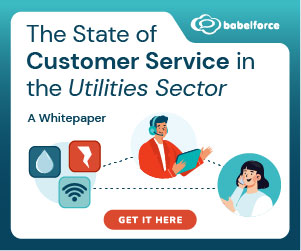When tackling high abandonment rates in contact centres, many teams focus immediately on speed of response or staffing levels. While important, these are just pieces of a much larger picture.
True improvement begins with understanding what your customers expect, how they behave when those expectations are or aren’t met, and how internal planning supports that.
To find out more, we spoke to Dean Couchman, Consulting Lead for the UK at Peopleware (formerly injixo), for advice on how to take a more nuanced, data-driven, and customer-centric approach to abandonment rate reduction.
Video: Improve Abandon Rate: Align Service Level With Customer Expectations
Watch the video below to hear Dean explain how to improve abandon rate and why you should align service level with customer expectations:
With thanks to Dean Couchman, Consulting Lead for the UK at Peopleware, for contributing to this video.
This video was originally published in our article ‘15 Proven Tactics to Reduce Abandon Rate’
6 Steps to Reduce Abandonment Effectively
Reducing abandonment rates takes more than just adding headcount or speeding up responses.
These six steps help you align operations with real customer behaviour, improving both experience and efficiency.
1. Understand Customer Expectations and Behaviour
Rather than just aiming for the fastest response time possible, ask: What are our customers expecting?
“When anybody starts talking about reducing abandonment rate, one of the first things I hear is always about the speed of response, and what’s the staffing level.
For me, any discussion should look at “what are our customers expecting, how are they going to behave when they do, or don’t, get that?”
Data often shows abandonment spikes at specific points – commonly around the 1:00 to 1:20 mark and again at 6 to 7 minutes – between these, many customers are still willing to wait.
These behaviours can vary by industry. For example, support customers may wait longer than sales leads, so you should align your service levels accordingly, as Dean explains:
“Looking in some detail, we normally see spikes of abandonment rate around about the one to one minute twenty second mark, or the six to seven minute mark.
There’s quite a void in between those two boundaries where people are actually willing to sit and wait to get the service they expect, and their behaviour is in line with it.”
2. Align Service Levels to Customer Need
Tailor your service level goals to match behaviour and expectations. For example, in sales, you may need a 90% answer rate within 10 seconds, while in support, 70% within 2 minutes may suffice, as Dean continues:
“So, bringing that into the planning world is also looking into “what percentage drops out in those periods?” and that can vary by industry – maybe in sales we’re seeing roughly 40% of the original contacts are still there after 1 minute on hold, the other 60% is abandoned, but in the support area it’s the other way around, 60 to 70% are still waiting, whereas only 30% have abandoned.
Tying these facets into what your service level goals are is the foundation of anything you should do.
So, maybe that sales area has a 90 in 10 second service level, the support as 70 in two minutes – it’s just aligning the service level to the expectation and behaviour of your customers.”
This targeted approach helps maintain satisfaction while using resources more efficiently.
3. Improve Forecast Accuracy
Go beyond the basics in your forecasting, and make sure you account for marketing activity, system performance, and other influencing events.
For example, slow systems can increase call duration, which affects both forecasts and abandonment.
“After that you’ve got the internal part around how do we get the forecast as accurate as possible? Look at all the small events that come into play – is there a marketing campaign?
Yes. Who’s it gone to? What populace is it? New customers? Old customers? Are the systems even running to speed?
If they’re being slow, calls are longer. Start marking these events in because they all have an effect on how accurate that future forecast can be.”
4. Build Smarter Schedules
Rigid, fixed schedules might feel fair, but they limit agility, so you should consider offering agents more self-managed scheduling options or flexibility based on preferences.
“You can then start looking into the scheduling – do you only apply fixed rotational patterns for fairness? Could you bring in more self-managed schedules from the employees’ preference side?
Bringing more flexibility in allows the workforce to be happier and destressed – but also with that revised forecast, a better alignment and in turn a happier customer as well.”
This not only supports agent wellbeing but also helps better align coverage with predicted demand.
5. Streamline Skills and Routing Paths
Examine how customers reach the right agent. For example, are they going through multiple layers of IVR? Are transfers common?
Simplifying routing and ensuring clear skill-based pathways can reduce customer frustration, shorten wait times, and improve first contact resolution, as Dean explains:
“Getting your customers then to those staff involves one key aspect – and that is your skills pathways. If they pick up the phone, how many layers of IVR do they have to go through? Do they have to be transferred? Do they not?
Having the path as direct as possible is a happy customer, and it’s going to be easier to manage, and monitor, and support.”
6. Focus on Intraday Management
Even the best forecasts need real-time oversight. Assign team members to monitor live volumes and agent availability.
“And the final part is intraday management. Knowing where people are, knowing where the volume is, having people looking after set roles within a team monitoring that can make massive differences that enable you to pivot on the second, should a spike suddenly happen, or a system has a hiccup, and you start getting repeat calls – you can be on it instantly.”
This enables quick pivots during unexpected spikes, system issues, or repeat calls – minimizing the impact on customer experience.
If you are looking for more great insights from the experts, check out these next:
- 5 Ways Technology Supports Contact Centre Agents Every Day
- The Evolution of Voice of the Customer
- 5 Ways AI Is Transforming the Agent Experience
- Tips to Improve Call Abandonment Rates
Author: Robyn Coppell
Published On: 23rd Oct 2025 - Last modified: 24th Oct 2025
Read more about - Video, Abandoned Calls, Call Handling, Customer Experience (CX), Customer Service, Dean Couchman, Metrics, Peopleware, Videos






































